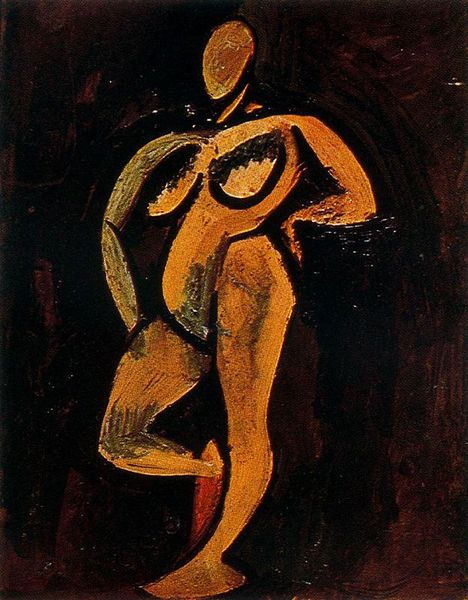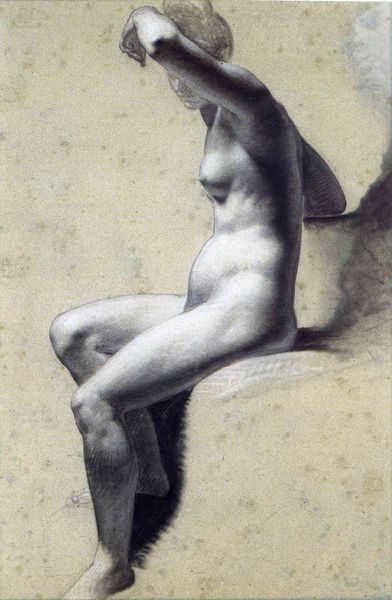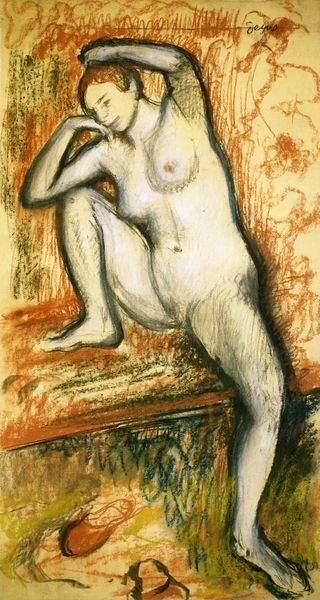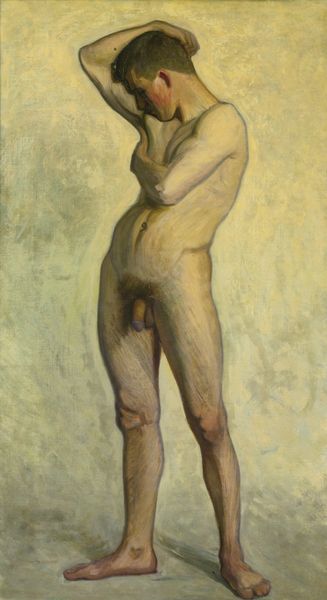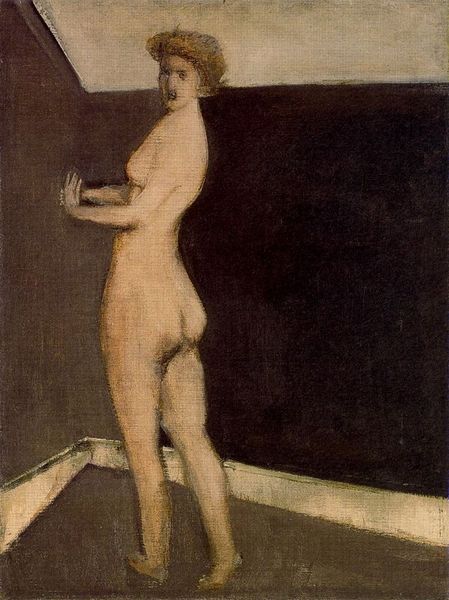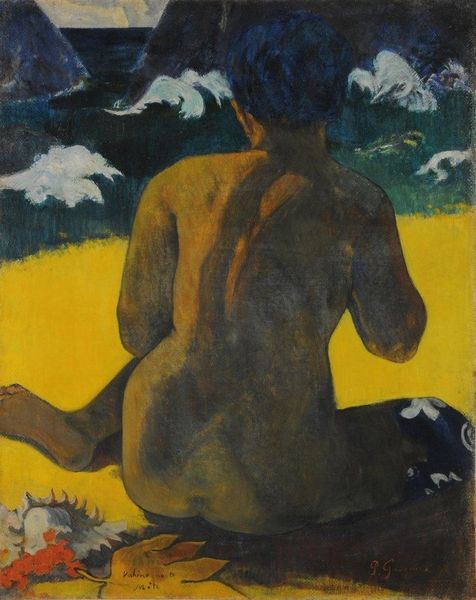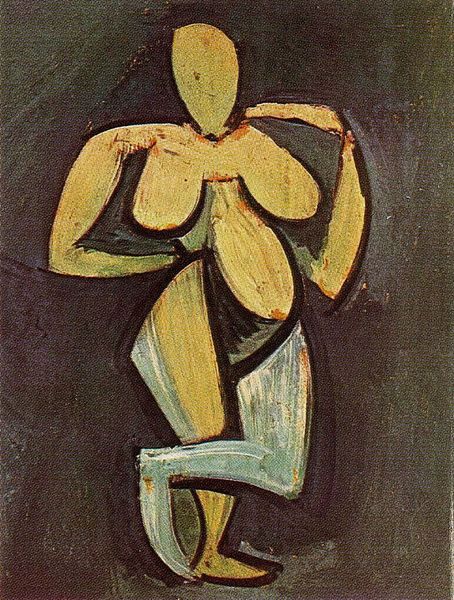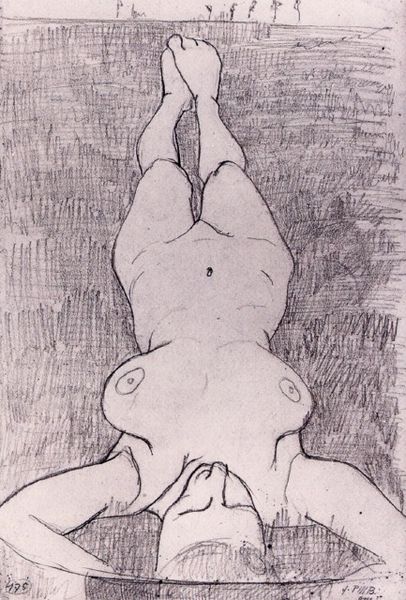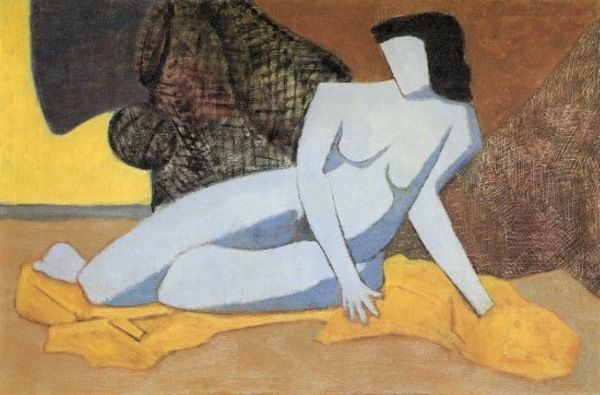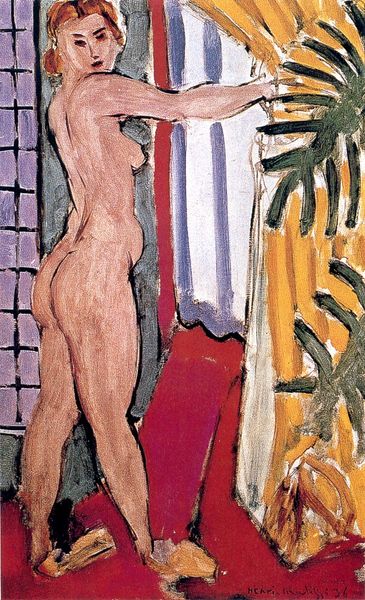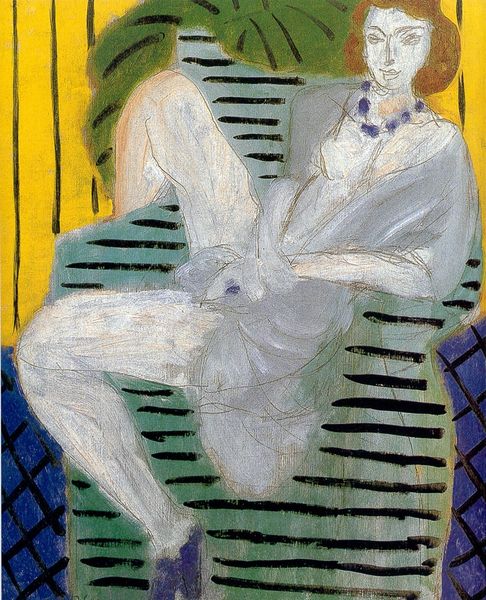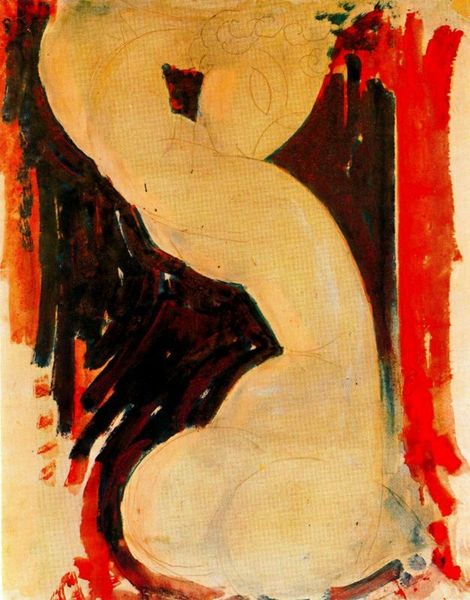
Copyright: Alexander Roitburd,Fair Use
Editor: Here we have Alexander Roitburd's "Yellow Triangle," an oil on canvas from 1996. I’m immediately struck by the figure’s melancholic pose and the contrast of the stark yellow shape with the muted grey tones. It feels rather theatrical. What socio-political narratives might be at play here? Curator: That's a great observation! Roitburd, a prominent figure in Ukrainian art, often engaged with the post-Soviet landscape through his work. Considering that this piece emerged in the mid-90s, a period of intense societal transition and economic upheaval, do you think this 'yellow triangle' could be read as symbolic of something? Think about how institutions were changing, and how artists positioned themselves in that changing cultural arena. Editor: Maybe it's a symbol of hope or perhaps even prosperity, rendered in a way that feels almost…sickly? Like a critique of the promises made during that period. The figure doesn't exactly look joyful. Curator: Precisely! The 'sickly' quality you identified is interesting. Given the rise of oligarchic power during that time, could this bright triangle also be interpreted as representing newfound wealth, but at the cost of societal well-being? Roitburd was quite active in shaping the art scene and challenging the status quo. Do you think this work might function as a critique of the art world as well? Editor: I hadn't thought of that! Maybe the 'yellow triangle' is a comment on artistic trends, or even on how artists were being ‘consumed’ by the market. Curator: Exactly. And that very critique would become part of his role as an artist engaged with societal discourse, and later on, as director of the Odessa Fine Arts Museum. The museum itself becomes a stage where these ideas play out. Editor: That gives me a lot to consider, thank you! Seeing it as a social commentary makes it far more powerful than just an interesting portrait. Curator: It is powerful precisely because it operated within the cultural and political currents of its time, constantly negotiating the space between personal expression and public engagement. Art has power, especially when is rooted in historical realities.
Comments
No comments
Be the first to comment and join the conversation on the ultimate creative platform.
